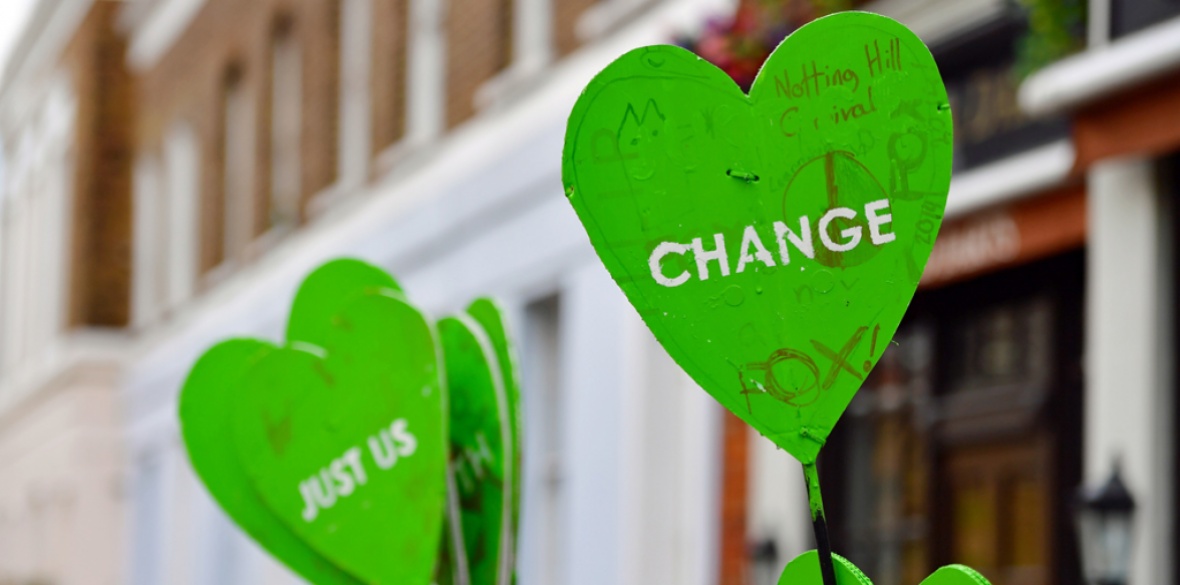This is the last article you can read this month
You can read more article this month
You can read more articles this month
Sorry your limit is up for this month
Reset on:
Please help support the Morning Star by subscribing here
ON Thursday, Parliament held a debate ahead of the upcoming second anniversary of the blaze at the Grenfell tower block on June 14 2017 which left 72 people dead.
As was made clear in the debate, the local community are still suffering from the disaster in a wide range of ways.
As the MP for the area Emma Dent Coad explained, “We have 11,000 people affected to varying degrees by the Grenfell atrocity in our neighbourhood. Some have been helped (by mental health services) but many have not.”
She added that “the type of trauma we have does not go away. There have been several suicides and while it is often difficult to ascertain causes, the people that I know of, five, who have lost their lives in the past seven months were affected to varying degrees by what happened.”
To give another example, in March, independent research found cancer-causing chemicals and other potentially harmful toxins close to Grenfell Tower in fire debris and soil samples, with the research finding “significant environmental contamination” from a range of toxins, including in oily deposits collected 17 months after the tragedy from a flat 160 metres from the site.
And, as has been widely reported, many survivors haven’t been properly re-homed, and the government has consistently failed to meet its own deadlines in this regard.
Two years on from the tragedy it is therefore unfortunately clear that not only has not enough been done to secure justice for the community, but also that many lessons have not been learnt in terms of the danger of another Grenfell occurring.
On the latter point, earlier this week, it was revealed that almost 60,000 people are still living in tower blocks covered in the highly flammable material that was used on Grenfell Tower.
Specifically, there are 24,800 homes in high-rise blocks that are still covered in Aluminium Composite Material (ACM) cladding. This incorporates about 16,400 homes in privately owned buildings and 8,400 in the social housing sector.
ACM panels were widely blamed as one cause of the rapid spread of the fire at Grenfell and have since been banned by the government.
Despite this, more than eight in 10 are yet to have the cladding taken down — a figure that rises to more than nine in 10 for privately owned blocks.
An urgent deadline for the removal of this cladding must now be set.
In addition to this, many more may people may be unknowingly be living in dangerous buildings covered in “non-ACM” flammable materials, as the government has still not properly tested suspect cladding of this type.
Whilst the government began testing non-ACM cladding last month, it has faced criticism for opting for a less comprehensive type of test than the one that was applied to ACM panels after the Grenfell fire.
With regards to this, ministers should now agree to fund the removal of other types of cladding that could be just as flammable.
Furthermore, in terms of the risk of the tragedy being repeated, the Fire Brigades Union (FBU) recently argued that that “the government has done nothing to adequately prepare fire and rescue services for a similar incident” with general secretary Matt Wrack saying that “two years on, the government still has not provided the planning and resources necessary to prepare firefighters for what are now completely foreseeable risks.”
In particular, the FBU has drawn attention to new evidence that reveals a postcode lottery of preparedness across the country, with some fire services planning to send as few as two fire engines to a high-rise fire.
This is deeply worrying — there is no reason why which part of the country a building is located in should determine the safety of its residents.
Whilst 40 fire engines were sent to Grenfell Tower on the night of the fire, the data collected by the FBU reveals that resources outside London are so stretched that fire and rescue services would not be able to mobilise on anywhere near that scale.
Finally, whilst the government seems incapable of understanding this simple reality, in the area of our fire and rescue service, as in other areas, it is important to understand that cuts have consequences, especially for public safety.
FBU research shows that cuts to fire and rescue services have continued after Grenfell, despite calls from the union to halt austerity measures in the wake of the tragedy. English fire funds from central government have been cut by another 15 per cent from 2016/17 to 2019/20.
Nearly 12,000 firefighters have been axed since 2010 meaning that one-in-five firefighter jobs have been cut.
Response times to emergencies are getting longer (with fewer firefighters at the early stages of incidents), greater risk to the public and fire deaths are creeping back up.
Cuts have also impacted on the number of fire safety inspections fire services undertake. Home fire safety checks have fallen by 25 per cent. The number of fire safety inspectors has fallen by 28 per cent.
These funding cuts must stop, the government must set a deadline for the removal of all dangerous cladding, and those effected by the Grenfell catastrophe must have justice.
Diane Abbott is shadow home secretary. She writes this column fortnightly.










